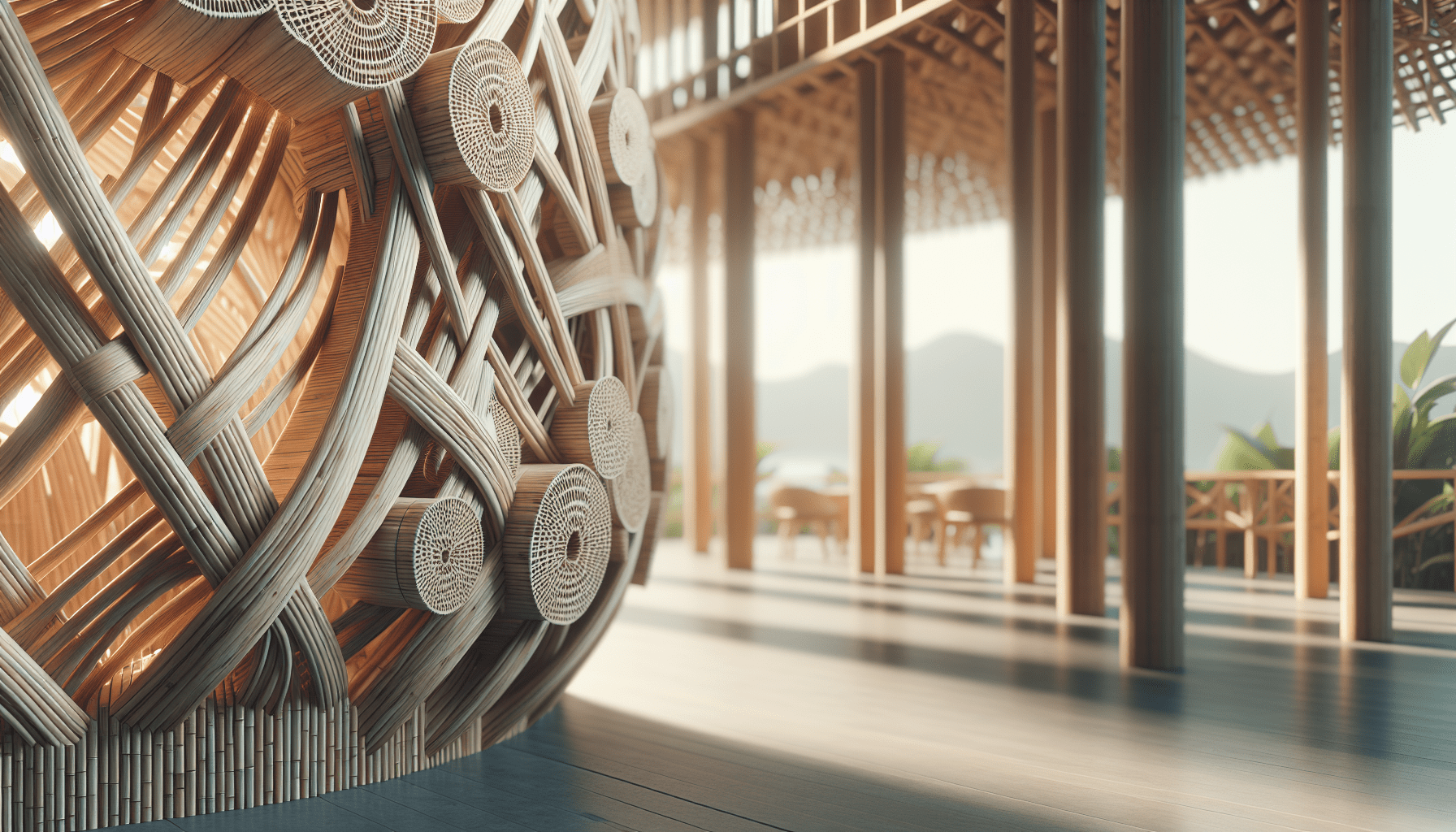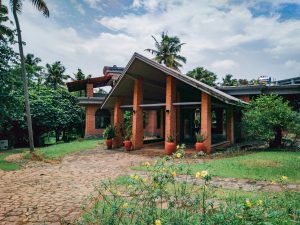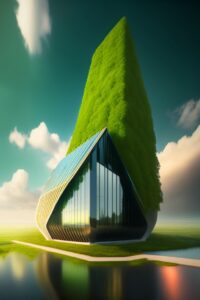In our quest to build a greener future, we are constantly discovering and utilizing cutting-edge materials that transform sustainable architecture. From bamboo and recycled steel to innovative options like mycelium and bioplastics, these materials offer remarkable environmental benefits without sacrificing style or performance. By integrating these resources into our construction practices, we are not only minimizing our ecological footprint but also paving the way for a more sustainable and resilient world. This revolution in material science allows us to reimagine the spaces where we live, work, and play, fostering harmony between our built environment and the natural world. Have you ever wondered how the buildings of the future are being crafted to be more sustainable and environmentally friendly? We sure have! In today’s world, where the impact of climate change is becoming increasingly evident, the importance of sustainable architecture cannot be overstated. To truly make a difference, architects and builders are turning to innovative materials that not only lessen environmental impact but also enhance the efficiency and durability of structures. Let’s dive into some of the groundbreaking materials that are setting the trend in sustainable architecture.
Bio-Based Materials
Bio-based materials are derived from renewable biological resources. They offer a promising alternative to traditional building materials and are often both biodegradable and compostable.
Bamboo
Bamboo has been hailed as one of the most sustainable materials in the construction industry. It’s incredibly fast-growing, some species can grow up to 35 inches per day, and it reaches maturity in just 3-5 years. Bamboo’s tensile strength rivals that of steel, making it an excellent choice for both structural and decorative elements in architecture.
Hempcrete
Hempcrete is a bio-composite material made from the inner woody core of the hemp plant mixed with a lime-based binder. This material is not only lightweight but also provides excellent thermal insulation and moisture regulation. Unlike traditional concrete, hempcrete is carbon-negative, as it absorbs more CO2 than is emitted during its production.
Mycelium
Mycelium, the root structure of fungi, is making headlines in the sustainable architecture sphere. It’s grown rather than manufactured, using agricultural waste products. Mycelium-based materials are lightweight, durable, and have fire-resistant properties. Additionally, they are fully compostable at the end of their lifecycle.
Recycled Materials
Recycling is an important aspect of sustainability, and the construction industry is increasingly turning to recycled resources to build greener structures.
Recycled Steel
Steel is one of the most recyclable materials in the world. Recycled steel retains the strength and durability of new steel but requires significantly less energy to produce. Using recycled steel can help reduce the ecological footprint of a building project significantly.
Reclaimed Wood
Reclaimed wood comes from old buildings, bridges, or other structures that are being dismantled. This wood can be repurposed for flooring, beams, and other components in new buildings. Reclaimed wood not only reduces the demand for virgin timber but also adds a unique aesthetic element to modern designs.
Recycled Plastics
Recycled plastics are increasingly being used in sustainable architecture. These plastics can be transformed into everything from roofing tiles to insulation products. Utilizing recycled plastics helps reduce waste in landfills and decreases the demand for new plastic production.
Innovative Concrete Alternatives
Concrete is one of the most widely used materials in the world, but it has a significant environmental impact due to high carbon emissions from cement production. Innovative alternatives are emerging that offer similar properties with less environmental cost.
Ferrock
Ferrock is made from recycled steel dust, a byproduct of the steel industry, combined with silica from ground-up recycled glass. This material has the unique property of absorbing CO2 as it hardens, making it a carbon-negative alternative to traditional concrete. Ferrock is also more durable and flexible than ordinary concrete, making it an excellent choice for sustainable construction.
AshCrete
AshCrete utilizes fly ash, a byproduct of coal combustion, to replace a significant portion of the cement used in traditional concrete. This substitution not only diverts waste from landfills but also reduces the carbon emissions associated with cement production.
Green Concrete
Green concrete involves various methods to make the material more sustainable, including the incorporation of industrial byproducts like slag or silica fume. Green concrete can be designed to have the same structural integrity as traditional concrete, all while reducing carbon emissions and utilizing waste materials.
High-Performance Insulation
Effective insulation is crucial for energy efficiency in buildings. High-performance insulating materials not only conserve energy but also reduce greenhouse gas emissions over the lifetime of a structure.
Aerogel
Aerogel, often referred to as “frozen smoke,” is a highly porous and extremely lightweight material derived from a gel where the liquid component has been replaced by gas. Aerogel has an extraordinary insulating property, being more effective than conventional insulation materials by a significant margin. Its use can drastically reduce heating and cooling energy requirements.
Sheep’s Wool
Sheep’s wool is a natural, renewable material that offers excellent thermal and acoustic insulation properties. It is biodegradable and less energy-intensive to produce compared to synthetic insulation materials. Additionally, wool can absorb and release moisture without compromising its insulating abilities, making it an effective form of insulation in various climates.
Cellulose Insulation
Cellulose insulation is made from recycled paper products, primarily newsprint, which is treated to resist fire, pests, and mold. This form of insulation is eco-friendly and provides superior thermal performance. It’s also a great way to recycle paper waste that would otherwise end up in a landfill.
Eco-Friendly Finishes
Beyond structural elements, the finishes in a building can also be made more sustainable through choice of innovative materials.
Low-VOC Paints
Volatile Organic Compounds (VOCs) in traditional paints contribute to air pollution and can have harmful health effects. Low-VOC paints, made with fewer harmful chemicals, provide an eco-friendly alternative without sacrificing quality or color. Using low-VOC paints improves indoor air quality and reduces the overall environmental footprint of a building project.
Natural Plasters
Natural plasters, such as those made from clay, lime, or gypsum, offer a breathable finish that can regulate indoor humidity and contribute to healthier indoor air quality. These plasters are typically sourced and processed with minimal environmental impact.
Recycled Glass Tiles
Recycled glass tiles are made from post-consumer and industrial glass waste. These eco-friendly tiles are not only visually appealing but also help reduce the amount of glass waste that ends up in landfills. They’re suitable for a variety of applications, from bathroom floors to kitchen backsplashes.
Innovative Structural Systems
Revolutionary structural systems can enhance sustainability and efficiency in building design and construction.
Cross-Laminated Timber (CLT)
CLT is an engineered wood product that is gaining popularity for use in large-scale building projects. Layers of wood are glued together at right angles to create panels with remarkable strength and stability. Using CLT reduces the reliance on steel and concrete, both of which have high carbon footprints. It also promotes carbon sequestration because wood stores carbon dioxide absorbed from the atmosphere.
Passive Solar Design
While not a “material” per se, passive solar design is an innovative approach to sustainable architecture. It involves designing buildings to maximize natural light and heat from the sun, reducing the need for artificial lighting and heating. This can be achieved through window placement, building orientation, and the use of materials that store and distribute solar energy effectively.
Modular Construction
Modular construction involves prefabricating building sections in a factory setting before transporting them to the construction site for assembly. This method reduces waste, enhances quality control, and shortens construction timelines. Use of sustainable materials in modular construction further amplifies its environmental benefits.
Living Materials
Living materials incorporate biological processes and organisms into building materials, offering new ways to create sustainable structures.
Bioconcrete
Bioconcrete is a self-healing material that integrates bacteria into the concrete mix. These bacteria produce limestone when exposed to water and air, effectively filling cracks and extending the lifespan of the concrete. By minimizing repair needs, bioconcrete reduces resource consumption and maintenance costs.
Living Walls and Roofs
Living walls and roofs, also known as green walls and green roofs, integrate vegetation into the building envelope. These structures improve air quality, provide insulation, manage stormwater, and create habitats for urban wildlife. They also contribute to the aesthetic appeal of urban environments.
Smart Materials
Smart materials adapt to environmental changes and offer dynamic properties that enhance sustainability.
Phase-Change Materials (PCMs)
PCMs absorb and release thermal energy during phase transitions, such as from solid to liquid and vice versa. When used in building materials, PCMs help regulate indoor temperatures, reducing the need for heating and cooling. This contributes to energy savings and improved occupant comfort.
Electrochromic Glass
Electrochromic glass, or smart glass, can change its transparency or opacity in response to an electric charge. This allows for control of light and heat entering a building, reducing glare and dependency on HVAC systems. Smart glass improves energy efficiency and occupant comfort while offering modern aesthetic appeal.
Conclusion
As we’ve explored, the world of sustainable architecture is brimming with innovative materials that promise to revolutionize the way we build and inhabit our spaces. From bio-based materials like bamboo and hempcrete to recycled innovations and advanced smart technologies, the future of architecture is undeniably green. By adopting these materials, we not only reduce the environmental impact of our buildings but also create healthier, more efficient, and aesthetically pleasing spaces to live and work in.
In embracing these innovations, we pave the way towards a more sustainable future, where our built environment harmonizes with the natural world. Whether we are architects, builders, or simply enthusiastic supporters of sustainable practices, it’s exciting to see the incredible potential that lies ahead. Let’s continue to explore and support these sustainable solutions, ensuring a greener and more resilient world for generations to come.




